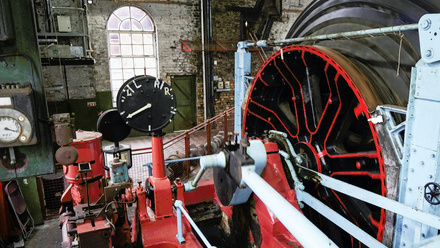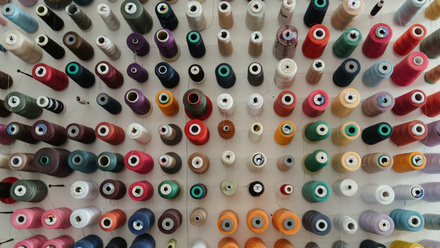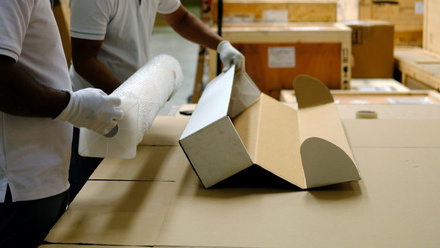Stolen and Damaged Willem de Kooning Painting Goes on View after Extensive Conservation
More than 30 years after it was cut from its frame, ripped from its backing, rolled up, and stolen from the University of Arizona Museum of Art (UAMA), Willem de Kooning’s painting Woman-Ochre (1954 – 1955) will once again be seen by the public in the exhibition Conserving de Kooning: Theft and Recovery.
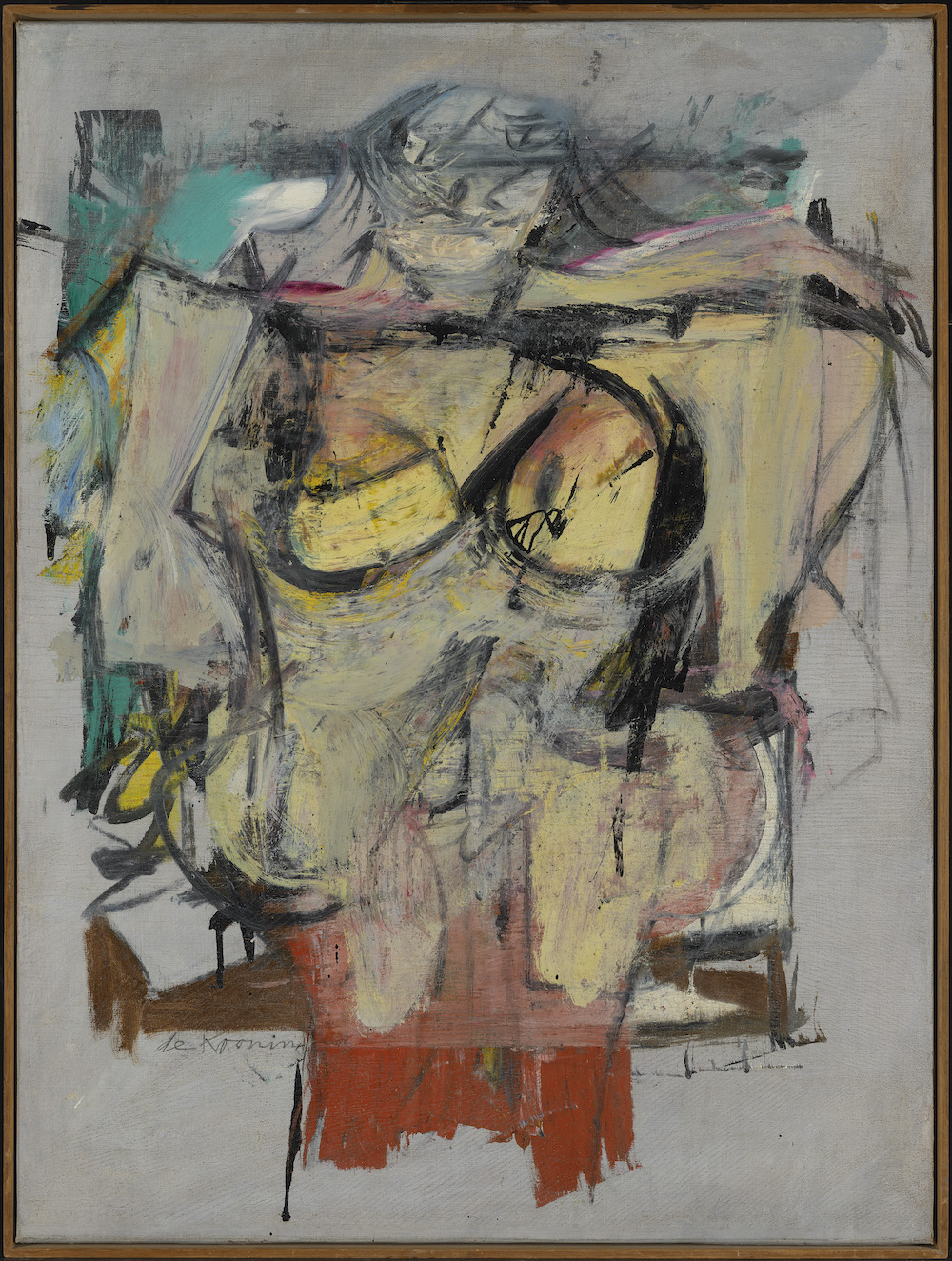
The painting will go on view at the Getty Center June 7 – August 28, 2022, after undergoing a challenging and long-awaited conservation treatment. Woman-Ochre was stolen from UAMA on November 29, 1985. Security guards described two suspects, a man and woman, who visited the museum the morning of the theft. No one was ever prosecuted, and the case remained unsolved for decades. The painting was missing for more than 30 years before it was discovered by the owners of an antiques store in New Mexico who immediately returned it to UAMA.
Timothy Potts, Maria Hummer-Tuttle and Robert Tuttle Director of the J. Paul Getty Museum said:
The Getty Museum’s Paintings Conservation department has had a long history of conserving works of art that belong to other institutions from around the world, many of which have faced unique challenges
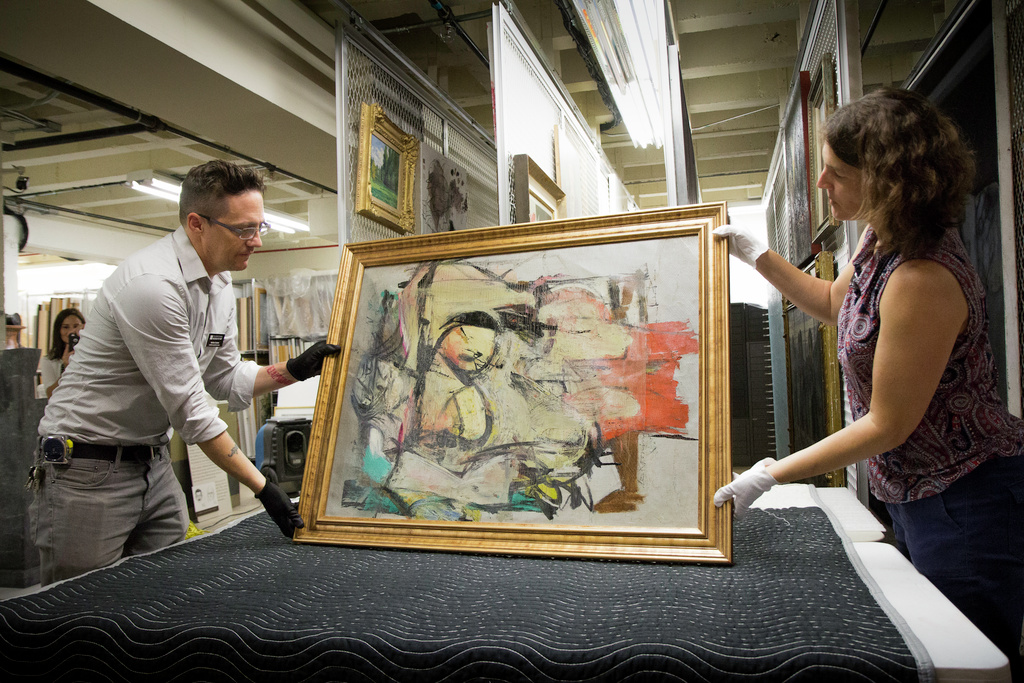
This project certainly counts amongst the most interesting and challenging for the team and has allowed us, together with colleagues at the Getty Conservation Institute, to bring this extraordinary painting, which was long feared lost, back to life.
Getty and UAMA announced in 2019 that the painting would travel to the Getty Center for study, repair, cleaning, conservation, and documentation. The Getty Museum’s Paintings Conservation department and the Getty Conservation Institute’s (GCI) laboratories offered their facilities and expertise free of charge. Badly damaged in the heist, the painting was a special challenge to Getty’s team of paintings conservators and scientists.
Ulrich Birkmaier, senior paintings conservator at the Getty Museum said:
The painting came to us in very poor shape. The brutal way in which it was ripped from its lining caused severe paint flaking and tears, not to mention the damage caused by the blade that was used to slice it from its frame. To bring a painting from such dire condition to a place where it can now be safely exhibited is an immense achievement.
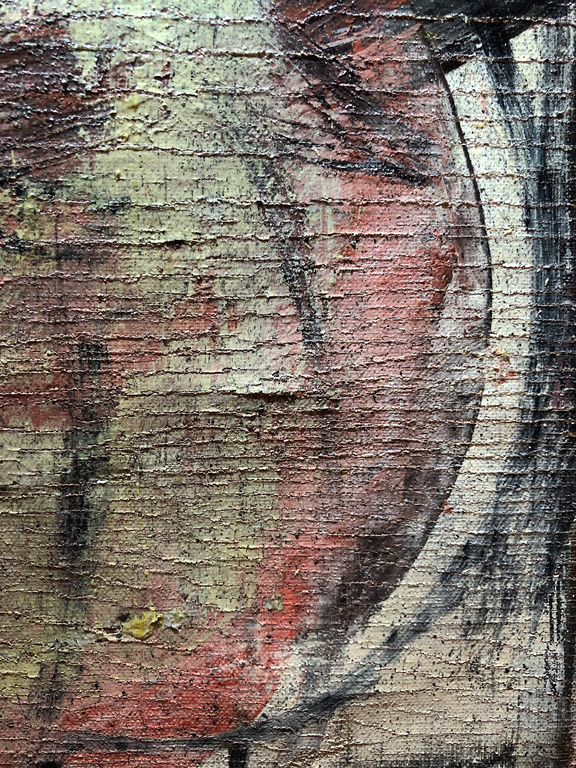
Peering into the paint
First, the team had to investigate which materials de Kooning used and how he applied them to the canvas—identifying his paints would help the team create the best conservation plan. De Kooning is known to have often used fluid house paints on his paintings, sometimes mixed with conventional artists’ oil paints, and these were detected in abundance on Woman-Ochre. GCI scientists also used Macro X-Ray Fluorescence (XRF) that scanned across the surface of Woman-Ochre to identify and map chemical elements, which can indicate the pigments present.
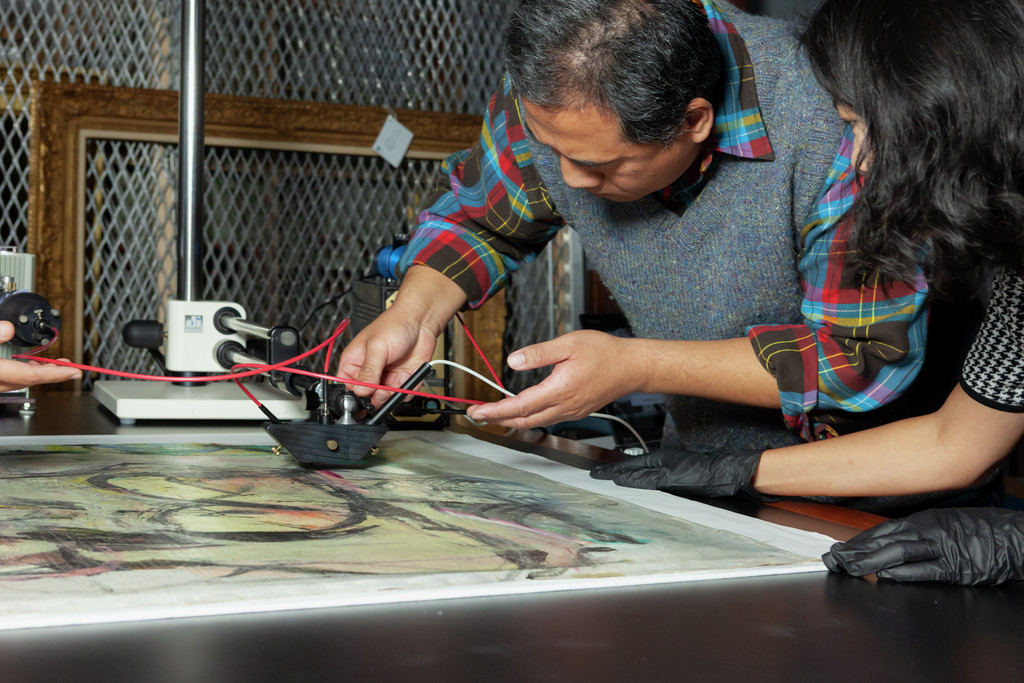
“The XRF scans were truly revealing,” said Tom Learner, head of Science at the GCI. “Not only did they help indicate which pigments de Kooning had used in the work, they clearly showed the dynamism of his painting technique, for example when scanning the presence of barium. The scans also confirmed how aggressive the theft was—each of the thin bright lines on the scan for calcium represents a paint crack that formed as the painting was torn off its lining canvas.” Additionally, a cross-section of its paint layers showed how de Kooning used charcoal sketching and detailing at multiple stages of the painting process, and microfade light sensitivity testing revealed that some of Woman-Ochre’s red paint had faded slightly over time.
Tackling the damage
For Woman-Ochre, conservators had two main treatment goals: to make it structurally sound so that it could safely travel and be exhibited, and to bring the painting closer to its original appearance.
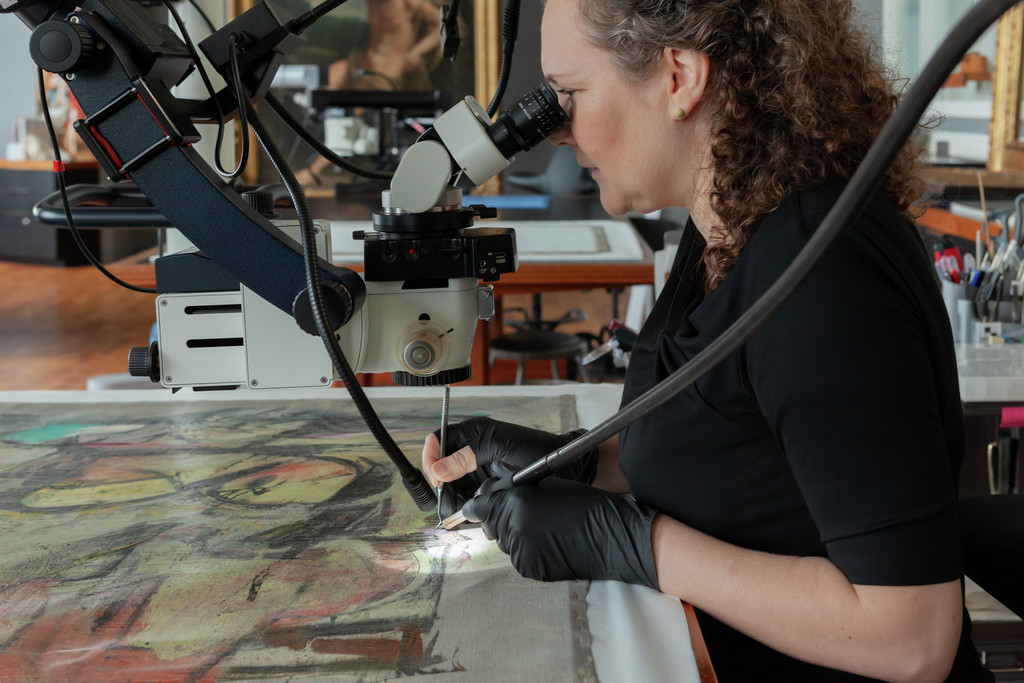
In addition to damage from the initial theft, the thieves also attempted to reframe the painting using a cheap stretcher, made crude paint and tear repairs, and applied a cheap varnish in addition to one that had already been applied. All these issues had to be addressed. Under a microscope, Getty paintings conservators first reattached individual areas of lifting and flaking paint using custom tools. Then, using specialized solvent mixtures, they carefully removed the two discolored varnishes. These efforts finally revealed de Kooning’s original painted surface.
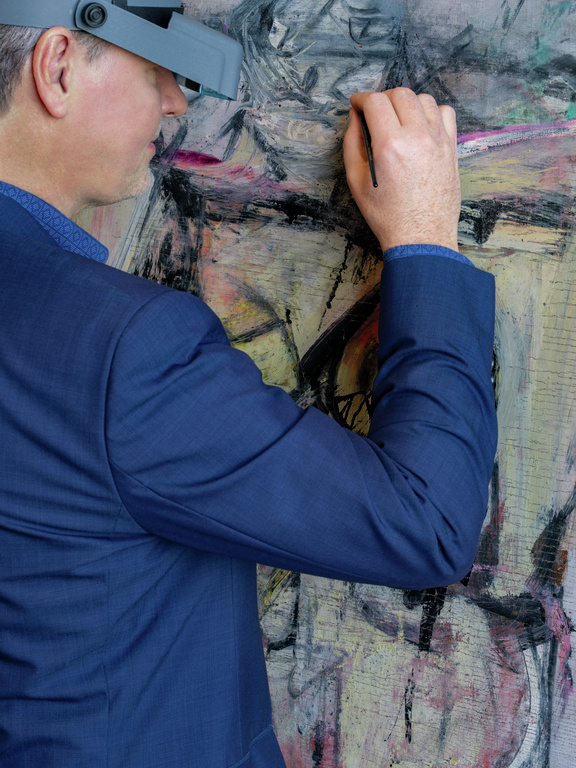
With the paint bonded to the canvas and the varnishes removed, a new lining reunited the painting’s original edges with the canvas that was cut from the frame. Finally, conservators began the painstaking process of filling each area where paint was lost, using reversible conservation pigments (contemporary conservators perform their work in a minimally invasive way, with reversible materials that can be removed later if needed). The result is a painting that has been brought closer to how it looked before the theft.
After Getty’s exhibition, the painting will return to the University of Arizona in fall 2022. A feature documentary about the infamous theft, “The Thief Collector,” will be released in 2022.
About Woman-Ochre
Willem de Kooning was born in the Netherlands and moved to New York in 1926. He was one of the pioneers and leaders of the abstract expressionist movement, which began in New York after World War II. In 1950, de Kooning began his best-known body of work, his Woman series, which included Woman-Ochre, completed in 1954–1955. The series is considered monumental in the way that it imagines the human figure. Woman-Ochre was gifted to the UAMA in 1958 by donor Edward Joseph Gallagher, Jr. The painting was regularly exhibited at UAMA and loaned to several important exhibitions on de Kooning and related artists at major museums around the world. On the day after Thanksgiving in 1985, a man and a woman followed a staff member inside the UAMA as soon as the museum opened at approximately 9 a.m. The woman distracted a security guard while the man went upstairs and cut Woman-Ochre from its frame with a sharp blade, ripping the canvas off its backing and rolling it up to conceal it. The two hurried out of the museum and never returned. They had been inside less than 15 minutes. In 2015, knowing that stolen art often surfaces when thieves die, the UAMA worked in coordination with the FBI to publicize the 30th anniversary of the theft. This resulted in widespread news coverage of the missing painting and proved to be a key factor in its recovery. In August 2017, David Van Auker, Buck Burns, and Rick Johnson purchased the painting, along with furniture and other art, from the estate of a deceased couple in Cliff, New Mexico. They took the items to their store—Manzanita Ridge Furniture & Antiques—in nearby Silver City, and displayed the work, unaware of its origins. Several customers commented on the painting’s authenticity, prompting Van Auker to research his purchase and connect it with the heist. He immediately called the UAMA and secured the painting. UAMA staffers traveled to New Mexico to retrieve the picture and brought it back to Tucson. At the museum, conservators were able to examine the painting carefully, matching it to the remnants of the cut canvas they had preserved after the robbery, and confirming that it was in fact Woman-Ochre.

